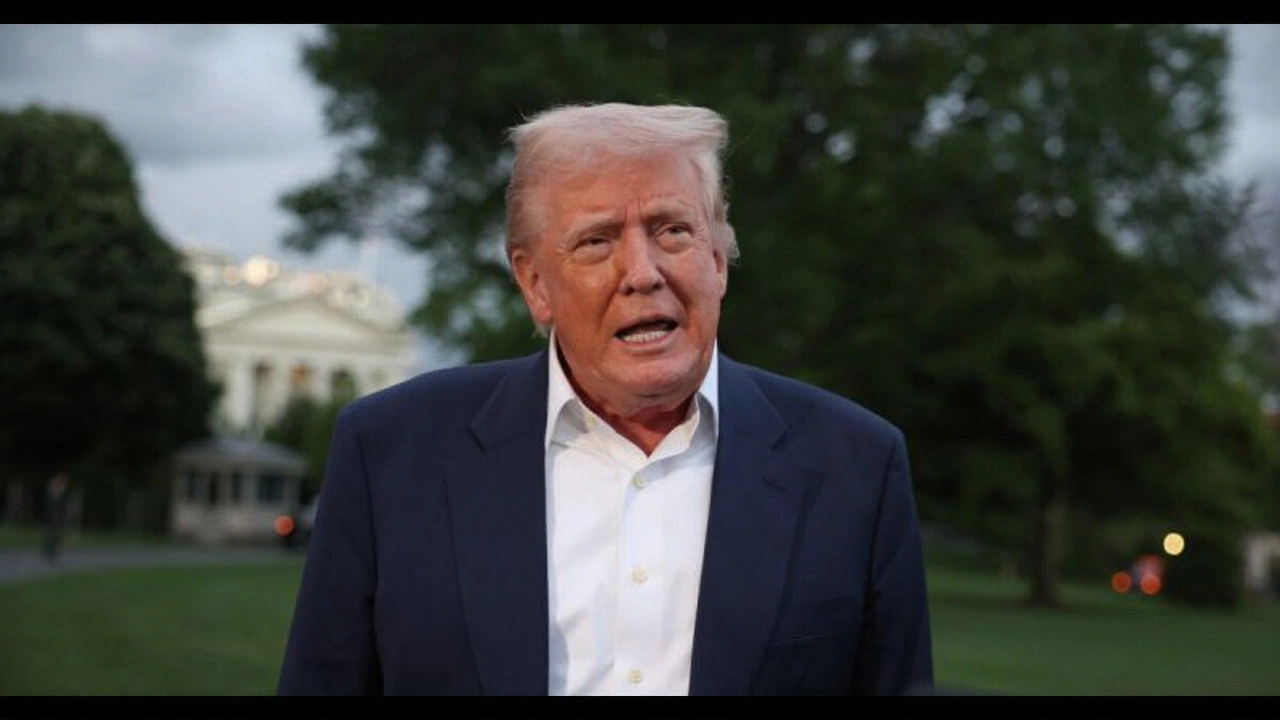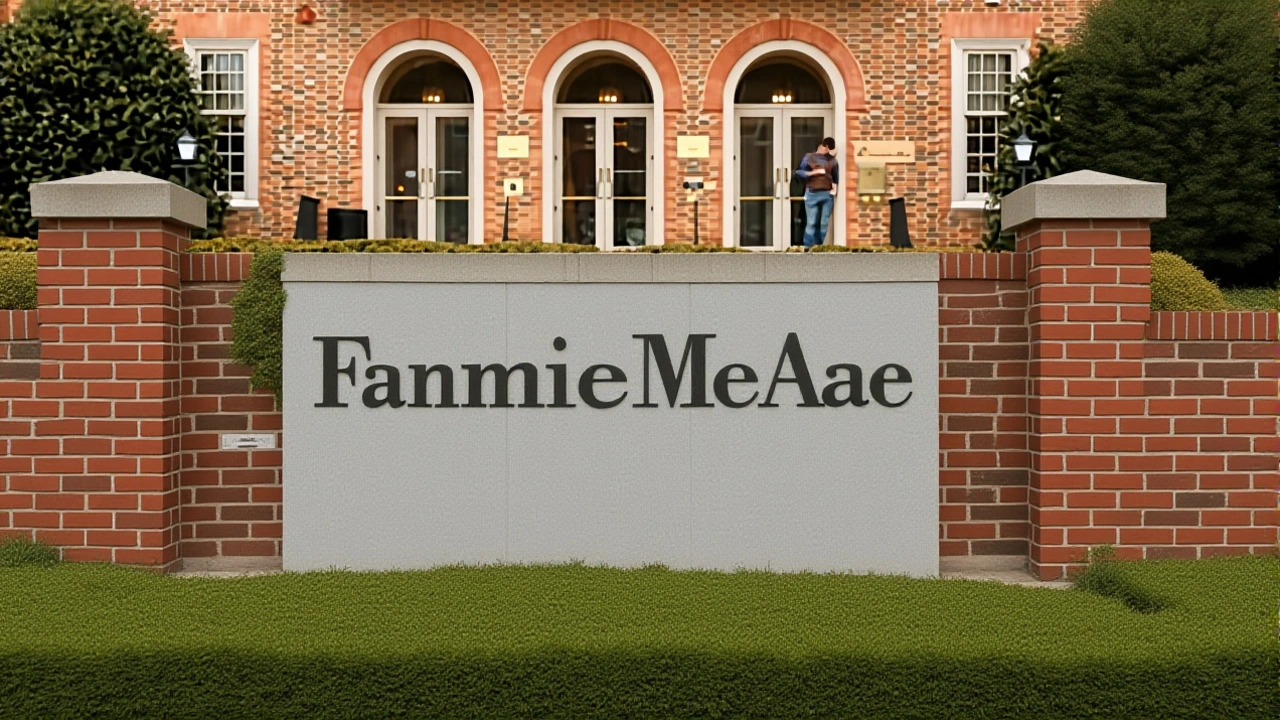When William J. Pulte, Director of the Federal Housing Finance Agency (FHFA), announced a new policy on June 25, 2025, the housing‑finance world took notice.
The directive, issued at the agency’s Washington, D.C., headquarters, orders the two government‑sponsored enterprises (Fannie Mae and Freddie Mac) to draft proposals that would let borrowers count cryptocurrency holdings on U.S.-regulated exchanges toward their mortgage reserve requirements – without first converting the assets into dollars.
Background: Crypto Meets Conventional Mortgages
For years, the reserves that lenders inspect when underwriting a single‑family mortgage have been limited to cash, savings, stocks, bonds, and the cash value of life‑insurance policies. Digital assets, even when verified on a blockchain, have been excluded because of volatility and the lack of a clear legal framework.
That changed after President Donald Trump signaled a push to make the United States the "crypto capital of the world." The administration’s broader agenda includes encouraging fintech innovation while balancing prudential risk – a tightrope FHFA now walks with Pulte’s announcement.
FHFA’s June 25 Directive – What It Says
In a short social‑media statement, Pulte outlined four concrete requirements for the GSEs:
- Cryptocurrency reserves may be counted without conversion to U.S. dollars, provided the holdings are verified and stored on U.S.-regulated centralized exchanges that comply with all applicable laws.
- The Enterprises must build risk‑mitigation buffers that reflect market volatility – likely meaning higher reserve percentages for crypto‑backed assets than for traditional equities.
- Each proposal must detail how the new asset class would be integrated into the existing "reserves" column of the Uniforming Credit Risk Standards (UCRS) used by Fannie Mae and Freddie Mac.
- The final plan must win board approval and undergo FHFA review before any operational change can take effect.
"Cryptocurrency is an emerging asset class that may offer an opportunity to build wealth outside of the stock and bond markets," Pulte wrote. "The FHFA has now determined that the consideration of additional borrower assets … may enable the Enterprises to assess the full spectrum of asset information available for reserves and to facilitate sustainable homeownership to creditworthy borrowers."
How Fannie Mae and Freddie Mac Might Implement Crypto Reserves
Both GSEs will likely start with pilot programs targeting borrowers who already hold sizable crypto portfolios – think self‑employed tech founders, early adopters, and high‑net‑worth investors. The proposals will need to answer several technical questions:
- Verification: How will the GSEs confirm ownership and custodial security on exchanges like Coinbase or Gemini?
- Volatility buffers: Will a crypto‑backed reserve be discounted by 30‑40 % compared with cash, as suggested by industry analysts?
- Liquidity triggers: If the market dips more than a set threshold, will the borrower be required to liquidate part of the holdings?
- Reporting cadence: How often will borrowers need to submit updated crypto‑balance statements?
Because most conforming loans backed by the GSEs do not require reserves at all, the immediate impact may be limited to conventional loans with reserve stipulations and jumbo mortgages where borrowers must demonstrate a higher cushion.

Industry and Legislative Reactions
Banking and mortgage‑lending firms have greeted the move with cautious optimism. John Lee, senior analyst at Moody's Investors Service, told reporters, "If implemented prudently, crypto‑backed reserves could open a new borrower segment without destabilizing the broader credit pool."
Yet not everyone is convinced. Democratic lawmakers warned that overly generous treatment of volatile assets could inflate housing‑price bubbles. In contrast, Senator Cynthia Lummis (R‑WY) recently introduced a Senate bill mirroring FHFA’s approach, arguing that “America’s innovators deserve a mortgage system that speaks their language.”
Consumer‑advocacy groups also voiced concern about potential fraud on unregulated exchanges, emphasizing the need for robust AML/KYC checks.
Potential Impact on Homebuyers and the Housing Market
For crypto‑savvy borrowers, the directive could eliminate the painful step of liquidating digital assets merely to meet a reserve requirement. Imagine a software entrepreneur who holds $150,000 in Bitcoin but only $10,000 in cash; under current rules, they’d need to sell crypto, possibly triggering a taxable event. With the new policy, that Bitcoin could sit untouched, counting toward the reserve ceiling.
However, the upside comes with trade‑offs. Mortgage insurers may demand larger equity cushions, and lenders could raise interest rates for loans with crypto‑linked reserves to offset perceived risk.
In the longer run, should the GSEs successfully integrate crypto, the housing market could see a modest uptick in loan applications from the tech‑heavy demographic concentrated in hubs like Silicon Valley, Austin, and Miami – cities already buzzing with digital‑asset activity.

Looking Ahead: Regulatory Landscape and Next Steps
Both Fannie Mae and Freddie Mac have 90 days to submit their detailed proposals to the FHFA board. The agency will then review the plans for compliance with existing capital‑adequacy standards and may request adjustments before granting final approval.
Meanwhile, the Treasury Department is drafting complementary guidance on how crypto assets should be treated for tax and reporting purposes, a factor that could shape the final design of the reserve‑counting methodology.
Watch for a potential rollout in late 2025 or early 2026, depending on how quickly the pilot phases clear the regulatory gauntlet. If the experiments prove successful, we could be on the cusp of a new era where digital wealth sits side‑by‑side with traditional savings in the mortgage‑approval process.
Key Facts
- Date of FHFA directive: June 25, 2025
Frequently Asked Questions
How will crypto reserves be verified?
The GSEs will require borrowers to provide account statements from U.S.-regulated centralized exchanges such as Coinbase, Gemini, or Kraken. Those statements must show ownership, custodial control, and compliance with AML/KYC rules. Independent third‑party auditors may be used to confirm the data before it is counted toward reserves.
Will this policy affect all mortgage types?
Not immediately. Most conforming loans that the GSEs back do not require reserves. The change primarily impacts conventional loans with reserve stipulations and jumbo mortgages where borrowers must demonstrate a higher cushion.
What risk buffers might lenders add?
Analysts expect volatility discounts of 30‑40 % for crypto assets, meaning a $100,000 Bitcoin holding could be treated as roughly $60,000‑$70,000 of eligible reserves. Lenders may also require higher equity ratios for loans that rely heavily on digital‑asset reserves.
How does this fit with broader crypto regulation?
The move aligns with the Trump administration’s agenda to foster a crypto‑friendly financial system. It also dovetails with pending Treasury guidance on digital‑asset taxation and a Senate bill introduced by Sen. Cynthia Lummis that would further embed crypto into mortgage underwriting.
When can borrowers expect to use crypto for mortgage reserves?
Fannie Mae and Freddie Mac have 90 days to file detailed plans with the FHFA. Assuming the board signs off, pilot programs could launch by the end of 2025, with broader adoption possible in 2026 pending regulatory clearance.

Abhishek Saini
October 8, 2025 AT 02:53Hey folks, great move by the FHFA – this could definately give crypto‑savvy borrowers a leg up on the mortgage game.
Even tho the policy is still in draft, it feels like a win for anyone who’s been juggling Bitcoin and a house hunt.
Just remember to keep those exchange accounts verified, otherwise the whole thing could fall apart.
Stay optimistic and keep tracking the guidelines as they evolve!
Parveen Chhawniwala
October 8, 2025 AT 19:33The inclusion of digital assets in reserve calculations raises immediate concerns about AML compliance and the fiduciary duties of GSEs.
From a regulatory standpoint, the existing OCC and FINCEN frameworks already mandate rigorous KYC procedures for U.S.‑regulated exchanges, which should extend to this new reservation model.
Moreover, the volatility buffers proposed must be calibrated using a statistically significant sample size, preferably a 60‑day rolling window of market data.
Failure to implement such safeguards could trigger systemic risk, especially if borrowers are compelled to liquidate assets during a market correction.
Thus, while the policy appears progressive, its execution must be anchored in robust risk‑management protocols.
PRAVIN PRAJAPAT
October 9, 2025 AT 12:13Another pop‑up policy from regulators that tries to look innovative but ignores basic finance principles. Counting crypto without conversion is a reckless shortcut. The volatility of digital assets dwarfs any traditional reserve buffer. Lenders will face higher default risk if the market tumbles. FHFA should focus on stability not hype.
rajeev singh
October 10, 2025 AT 04:53From a cultural perspective, the United States has long been a melting pot for financial innovation, tracing its roots back to the early banking houses of the 19th century.
Integrating cryptocurrency into mortgage reserves can be seen as an extension of this tradition, reflecting the adaptive spirit of the American market.
Nevertheless, it is incumbent upon policymakers to ensure that such advancements do not marginalize communities lacking access to digital asset platforms.
Equitable implementation will safeguard both legacy borrowers and emerging technologists alike.
ANIKET PADVAL
October 10, 2025 AT 21:33The recent FHFA directive represents a profound juncture in the evolution of American financial sovereignty.
By acknowledging cryptocurrency as a legitimate component of mortgage reserves, the agency is, in effect, championing the technological leadership that the United States has historically cultivated.
This move aligns with the broader national objective of fostering homeownership among innovators who propel our economy forward.
It is incumbent upon the Federal Housing Finance Agency to ensure that such progressive policies are not merely symbolic gestures but are underpinned by rigorous actuarial safeguards.
The inclusion of digital assets must be accompanied by robust verification mechanisms that prevent fraudulent misrepresentation.
Moreover, volatility buffers should be calibrated to reflect the empirical risk profiles historically observed in cryptocurrency markets.
Failure to impose such disciplined measures would betray the fiduciary responsibility owed to American taxpayers.
In a nation built upon the principles of prudence and foresight, reckless liberalization of mortgage underwriting criteria would be anathema.
Therefore, it is essential that the GSEs develop pilot programs grounded in empirical data and transparent governance.
The pilot phases should be subject to periodic review by an independent oversight committee composed of economists, legal scholars, and industry veterans.
Only through such multi‑layered scrutiny can the policy achieve its intended purpose without compromising systemic stability.
The American spirit of innovation thrives when it is coupled with a steadfast commitment to accountability.
As custodians of the nation’s housing finance engine, Fannie Mae and Freddie Mac must exemplify this balance.
In doing so, they will not only unlock new avenues of credit for tech‑savvy borrowers but also reinforce confidence in the broader mortgage market.
Ultimately, this initiative stands as a testament to America’s resolve to remain at the vanguard of financial progress while safeguarding the foundational values that have long defined our republic.
Shivam Kuchhal
October 11, 2025 AT 14:13What an exciting development for the crypto community! This policy could empower countless entrepreneurs to secure homes without liquidating their digital portfolios.
Let’s keep an eye on how the GSEs shape the pilot programs – the possibilities are truly inspiring.
Stay positive and watch the market adapt!
sakshi singh
October 12, 2025 AT 06:53I completely understand the optimism that many feel about this directive, especially given the challenges of converting crypto assets into cash for mortgage qualifications.
From a mentorship standpoint, it’s vital to educate borrowers about the importance of maintaining accurate records on regulated exchanges to avoid any future complications.
At the same time, we should also highlight the responsibility that comes with leveraging such innovative financial tools, ensuring that borrowers remain aware of potential market fluctuations.
Providing clear guidance on how to submit periodic balance statements can alleviate a lot of anxiety for first‑time homebuyers navigating this new terrain.
Moreover, community workshops that demystify the verification process could serve as a bridge between traditional lenders and the tech‑savvy demographic.
By fostering an open dialogue, we can collectively turn this policy into a sustainable pathway toward homeownership for a broader audience.
Let’s keep supporting each other as we watch these proposals develop.
Hitesh Soni
October 12, 2025 AT 23:33The proposal, while seemingly forward‑looking, neglects the fundamental principle of liquidity risk management.
A rigorous stress‑test framework must be employed before any crypto‑backed reserves are accepted.
Absent such analysis, the GSEs risk compromising their capital adequacy ratios.
Furthermore, the reliance on U.S.‑regulated exchanges does not eliminate the possibility of systemic contagion.
Consequently, prudence should prevail over enthusiasm.
Ravi Patel
October 13, 2025 AT 16:13Nice overview of the policy its potential could really open doors for many borrowers who hold crypto assets
Just make sure the verification process stays simple and transparent for everyone involved
Adrija Maitra
October 14, 2025 AT 08:53Wow, that’s wild!
RISHAB SINGH
October 15, 2025 AT 01:33Really cool to see crypto finally getting some legit recognition in mortgages – hope it works out for the tech folks out there!
Deepak Sonawane
October 15, 2025 AT 18:13From a capital‑structure perspective, integrating crypto‑denominated reserves mandates a recalibration of the risk‑adjusted return on equity (RAROE) matrices, particularly under the Basel III framework.
The marginal impact on the weighted‑average cost of capital (WACC) could be non‑trivial, necessitating an incremental beta adjustment for exposure to digital asset volatility.
Moreover, the proposed liquidity buffers must be stress‑tested against tail‑event scenarios modeled via Monte Carlo simulations to capture potential drawdown correlations.
Absent a comprehensive risk‑adjusted valuation model, the GSEs risk engendering arbitrage opportunities that could destabilize the secondary market.
In sum, the policy is a double‑edged sword that demands sophisticated quantitative governance.